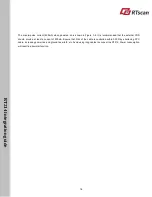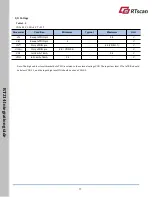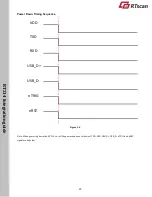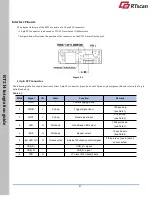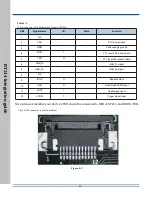
RT
21
4
In
te
gr
ati
on
gu
id
e
9
Table 2-3
Specification
Description
Spectral Transmittance
≥
90% (PMMA)
≥
91% (Chemically tempered glass)
Thickness
0.5-2.0mm
Light Wavelength
400-780nm
Clear Aperture
1.0mm to edges
Surface Quality
60-20 scratch/dig
Pay extra attention to the light wavelength when using plastic materials. Colored windows are not recommended if the engine
is used to scan barcodes on moving objects.
Coatings and Scratch Resistance
Scratch on the window can greatly reduce the performance of the RT214. It is suggested to use abrasion resistant window
material or coating.
The following introduces two commonly-used types of coatings:
•
Anti-reflection coatings:
Anti-reflection (AR) coatings can be applied to window surfaces to reduce reflected light from the
window back into the engine. Multi-layer AR coatings on windows help to achieve less than 0.5% reflectance and covered
wavelength is 400-780nm.
•
Scratch resistance coatings:
Scratch resistance coatings require a degree of greater than 5H in its hardness. Coatings can be
applied to plastic surfaces to increase the surfaces
’
abrasion and scratch resistance.
Both tempered glass and plastic windows can be AR coated. However, it is easier and more cost-effective to put an AR coating on
the glass than on the plastic.
The AR coating specifications below should be met when using an AR coated window.
Single side AR coating: 93% minimum transmittance within spectrum range from 400 nm to 780 nm.
Double side AR coating: 97% minimum transmittance within spectrum range from 400 nm to 780 nm.

















